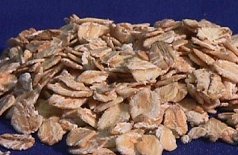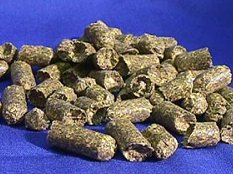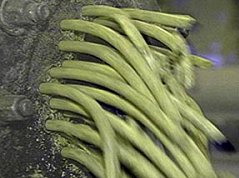Week 6
Feed Processing
|
 |
 |
Instructions for listening to audio clips
- Download the QuickTime
Player to listen to the audio files.
- Read the QuickTime
Instructions for installation help.
- Download the RealPlayer to listen to the audio files
- Instructions are on the RealPlayer download page
Grain processing
Text Transcript
Follow along with the audio...
- Cold processing
- Rolling – crushed between crimped rollers
- Fast, economical processing of like grains
- Grinding – broken into pieces with swinging hammers
- Slower, requires more energy than roller, can process different
grains at the same time

- Soaking and reconstitution – swells seed coat
- Not suited to large quantities
- Must be fed quickly
- Limited transport to distant feeding areas
- Sprouting legumes reduces anti-nutritional factors
- Acid preservation – ensiling or treating grains with organic acids
- Requires air-tight storage, limited ability to transport
- Stored at 30 – 35% DM, produces lactic acid
- Reduces need to dry fresh grains prior to storage
- Good palatability, but reduced intake with HM forages
- HM corn = whole corn on dry basis (see Table 11-10 on page
216)
- Heat processing
- Steam rolling or flaking
- Introduce hot moisture (steam) then roll
- Flaking holds grain in steam longer for higher moisture, flatter
grain flake – gelatinizes starch

- Pelleting
- Grinds feed and pushes the mash through holes to make round
pellets – some gelatinization
- Increased density over ground or flaked grain
- Multiple ingredients can be incorporated into the pellet
- Fines can be made palatable

- Extrusion
- Like pelleting, but can be higher moisture, fat
- Extruded products dry and are crumbled
- Heats the product – destroys anti-growth factors in legumes,
protect some protein from rumen breakdown

- Popping, Exploding
- Open the seed coat by heating interior moisture to explode
endosperm
- Reduces density of feed significantly
- Not suited to processing large quantities, uncommon use today
- Spray coating processed grains
- Fat or molasses sprayed on or mixed in processed feeds
- Coatings may include yeast, mineral/vitamin sources, etc.
- Increases palatability, reduces dust, fines
|
 |
 |
|




